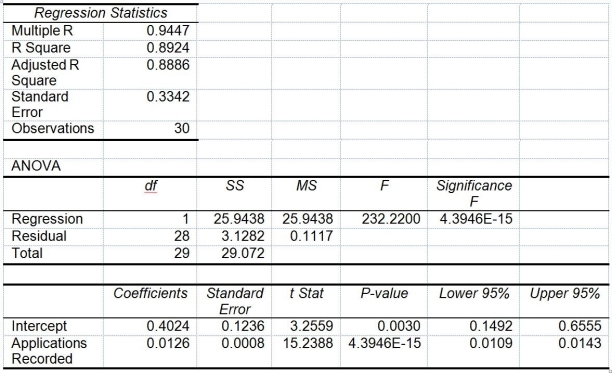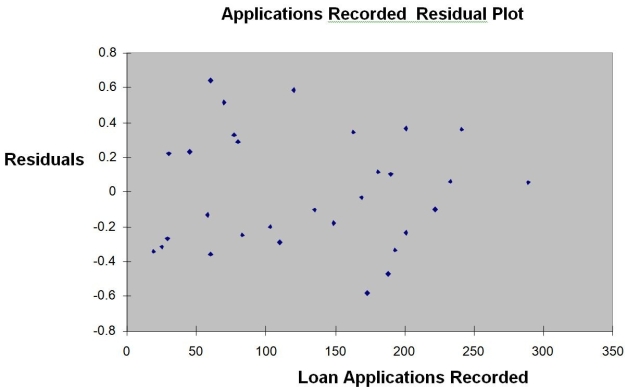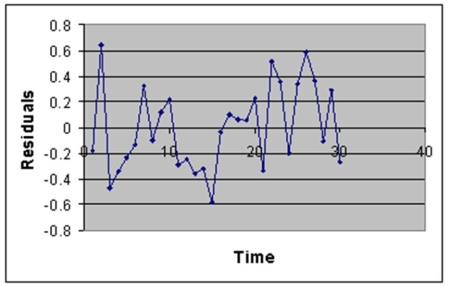TABLE 13-12
The manager of the purchasing department of a large saving and loan organization would like to develop a model to predict the amount of time (measured in hours) it takes to record a loan application. Data are collected from a sample of 30 days, and the number of applications recorded and completion time in hours is recorded. Below is the regression output:

Note: 4.3946E-15 is 4.3946 ×



-Referring to Table 13-12, to test the claim that the mean amount of time depends positively on the number of loan applications recorded against the null hypothesis that the mean amount of time does not depend linearly on the number of invoices processed, the p-value of the test statistic is
Definitions:
Types of Variables
Categories of variables in research, including independent, dependent, and control variables, among others.
Values of Variables
The specific amounts or categories that variables can take on in data collection and analysis.
Numeric Value
A quantitative measure expressed as a number, which represents a specific quantity or amount.
Yearly Earnings
The total amount of money earned by an individual or entity in one year, often before taxes.
Q2: The logarithm transformation can be used<br>A)to overcome
Q7: Referring to Table 15-3,the prediction of time
Q10: Referring to Table 14-11,in terms of the
Q29: Referring to Table 13-10,construct a 95% confidence
Q32: Referring to Table 14-19,what is the p-value
Q87: The residual represents the discrepancy between the
Q100: Referring to Table 13-12,you can be 95%
Q174: Referring to Table 12-11,the decision made suggests
Q222: Referring to Table 14-8,the estimate of the
Q337: Referring to Table 14-8,the analyst wants to